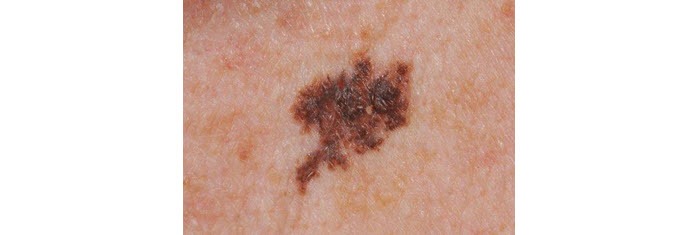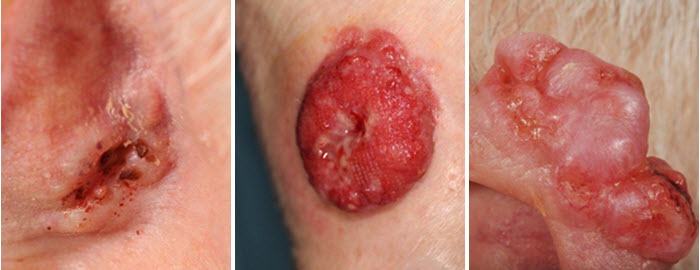
Skin Cancer
Types of Skin Cancer
There are several types of skin cancer which are divided into two main groups: melanoma and non-melanoma. Melanoma is the least common but most serious form.
Malignant melanoma skin cancer (melanoma)
This is an aggressive type of cancer that can rapidly spread and be fatal. It often starts with a change in a mole or a new growth on normal skin. It is associated with ultraviolet radiation (UV) exposure from sunbeds, intermittent sun exposure and a history of sunburn, especially in childhood.

Melanoma is a cancer that develops in the melanocytic cells in the epidermal layer of the skin. It may start in an existing mole but can also develop as a new growth on normal skin. More rarely melanomas can be found under the nails, in the eye or on areas of the body not normally exposed to the sun.
If untreated, melanoma cancers metastasise, that is, cancer cells from the melanoma break away and spread to other areas of the body. Malignant melanoma if found early and treated promptly can have an excellent outlook.
The number of people affected by melanoma in Northern Ireland continues to increase each year and since the 1990s the incidence of melanoma has doubled. Survival from the disease is excellent – 97.2% after one year among men and 99.3% among women diagnosed between 2010-2014.
Five year survival for diagnoses between 2010-2014 is 90.1% among men and 95.2% among women. Survival from this disease is generally very good here compared to survival in other countries.
Non-melanoma skin cancer (NMSC)
This is usually not fatal but may be very disfiguring. It is most often found on parts of the body regularly exposed to sunlight (the face, neck, ears, forearms and hands) and most cases are associated with lifelong over-exposure to the sun.

Non-melanoma skin cancers are the result of DNA damage usually due to excess exposure to UV radiation but may also result from exposure to dangerous chemicals. Normally exposure to the carcinogen occurs years before the cancer appears.

CARE IN THE SUN
RISK FACTORS
Anyone can develop skin cancer, whatever their skin colour. However, certain skin types are more at risk from the effects of UV radiation than others.
SKIN PROTECTION
Too much ultraviolet (UV) light, either from natural sunlight or from artificial sources such as sunbeds, is the main cause of 80% of skin cancers.
SUNBEDS
Sunbeds, tanning booths and sun lamps give out ultraviolet (UV) rays that can damage your skin and can make it look wrinkled, older or leathery.

